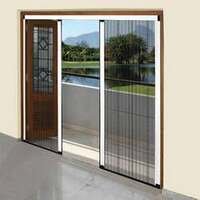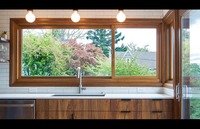












uPVC windows and doors
The profiles must conform to EN 12608:2003 severe climatic condition and their class must be specified by the manufacturer clearly printed on the profile so that the customer can identify the brand/ original manufacturer and the standard followed. UWDMA through Bureau of Indian Standards is working on a standard for the Indian market based on the EN 12608 with certain parameters adapted to suit the Indian climatic conditions and test ability.
In the absence of Indian standards for uPVC windows and doors, UWDMA has made a draft specification universally accepted by all industry leaders and practiced by them. Some of the international standards prevalent today in the market for uPVC windows and doors are:-
BS EN 7412:2007 - specification for windows and doorsets made from un plasticized polyvinyl chloride extruded hollow profiles
BS EN 6375-3-2009+ A1:2003 - Performance of windows and doors part 3. Classification for additional performance characteristics and guidance on selection and specification
BS EN 12207:2000 - Windows and Doors - Air Permeability Classification
BS EN 12208:2000 - Windows and Doors - Water Tightness Classification
BS EN 12210-1999 - Windows and Doors - Resistance to Wind load classification
IS 875 Part -3 : 1987 – Code of practice for design loads (other than earthquake) for buildings and structures – Part 3 Wind Loads
uPVC is a green material obtained by polymerisation of Vinyl Chloride and has widely been used in the manufacture of doors and windows for more than 4 decades in western countries and since last 2 decades in India. Its insulation property makes it the ideal material for windows and doors in a near Tropical Climatic country like India.
uPVC is ideal for Indian Climate which is near tropic and has a high demand for energy conservation. uPVC windows help in controlling the heat coming into the building / home by acting as a insulator. Buearu of Energy Efficiency is working towards Star Rating of windows based on the insulation properties of windows and uPVC windows are a ideal choice as they can offer U value as low as 0.6 W/m2K for high performance casement windows and 2.4 W/m2K for normal Sliding Windows which is much lower than other type of windows (wood, aluminium, steel, etc).



